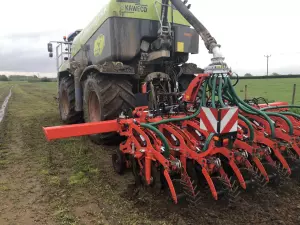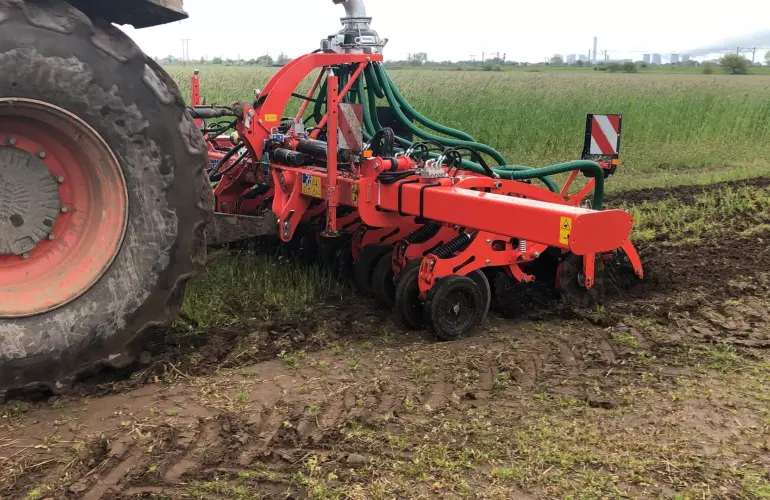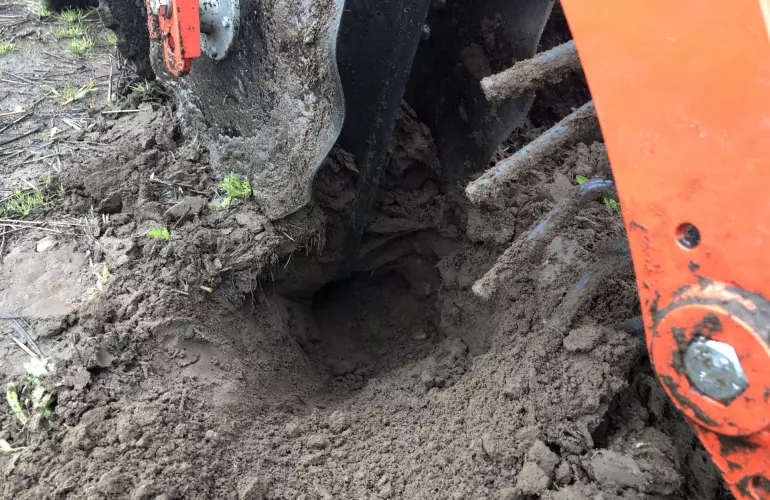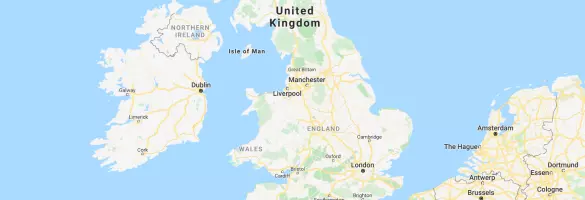Chris Platt has improved soil health, reduced labour and fuel and saved time by choosing to strip till his land. He has also introduced a way to use the machine to inject liquid digestate from his anaerobic digester before drilling maize. If this were not enough, he is now planning to incorporate a seeder so he can cultivate, fertilise, and drill all in one pass.

Using a KUHN Striger for strip tilling, he makes only one pass before drilling maize which has brought huge time fuel and labour savings to the farm. “It is our primary crop, so any economies we can make will all be seen when it comes to harvest. We used to spread the digestate on the land first then plough and then do another pass with a power harrow before being able to drill." Having seen operators in Europe adapt their Strigers, he is also looking to incorporate a seeder to the same machine in order to sow at the same time as cultivating and fertilising.
“I think it can be done and, whilst we haven’t tried it yet, I am keen to find a way to make it work. The savings will be significant, and it makes sense to use the machinery to maximise the time we have available, whilst minimising the potential soil damage multiple passes with tractors can cause.”
Mr Platt is a forward-thinking farmer willing to embrace both new techniques and technology. He has also chosen to enter into a mid-tier countryside stewardship scheme to make better use of land that is prone to flooding. Myrtle Grange Farm extends to a varied 2,000 acres which includes 600 acres of wheat, 400 of spring oats and 500-1000 acres of maize depending on the land and the rainfall.
“We have some very fertile land, but it is prone to flooding and, in the past, maize crops have been badly affected after prolonged periods submerged in water. In contrast, we also have land that we have to irrigate,” he explains.

On his lighter land he has chosen plant maize directly after his rye crop. However, the windows for drilling are short, which has led him to use the KUHN Striger to save time. “We use GPS and set the legs at 12 inches and the machine glides through the land. I have also adapted the Striger to incorporate slurry which is injected at 8 inches to make sure it doesn’t bubble up or touch the seed when we drill. It was a steep learning curve programming the technology to work accurately with the strips, but the Striger was very accurate and so the slurry was applied evenly.

To drill he uses an 8 row KUHN Maxima TI L-E and alters the row spacings to enable it to follow the 6 metre Striger. “I can easily alter the row spacings from 750mm to 500mm. I have found this increases yield because the crop is competing for space, but still dies off in time for harvest. In the season to come we are going to use 12 rows rather than 8. This will make it slower, but we will still do more in the same time. 12 outlets will make it easier to regulate the slurry too because we will have more outlets to apply into.”
The one pass system also conserves moisture which is important when he moves from the water hungry rye to maize in the summer. Making decisions on the farm has been made increasingly difficult by fluctuations in the weather.
“2018 was dry, and we had to irrigate immediately after planting the maize. However, the one pass system conserves ground moisture, reduces machinery and cuts the reliance on labour by four men. This means I no longer need to work in slurry, after a contractor has applied it, which helps to keep moisture in the soil.”
The Striger has also helped Mr Platt to reduce the amount of diammonium phosphate (DAP) that he uses, because he is able to apply liquid digestate more accurately.
“By using more liquid digestate we have reduced our DAP inputs. 30 cubic metres per hectare was the figure we settled on and my agronomist was very impressed with the way the Striger got the strips just right. He subsequently calculated that when we were spreading conventionally, we were losing 30% of the digestate compared to injecting it with the Striger.”
In the future he is looking to further utilise the Striger for oilseed rape (OSR) cultivation. “Growing OSR is becoming more attractive, and it will make use of the Striger in the autumn. I can use it to cultivate a harvested wheat field, and OSR can take more slurry which will help us to be more efficient as the windows for applying slurry are shorter. This is when I may experiment by adding a seeding unit so that I can cultivate, apply slurry and drill in one pass. Should it go to plan, it will be an extremely economical way to plant OSR and will make best use of the Striger too,” he concludes.

